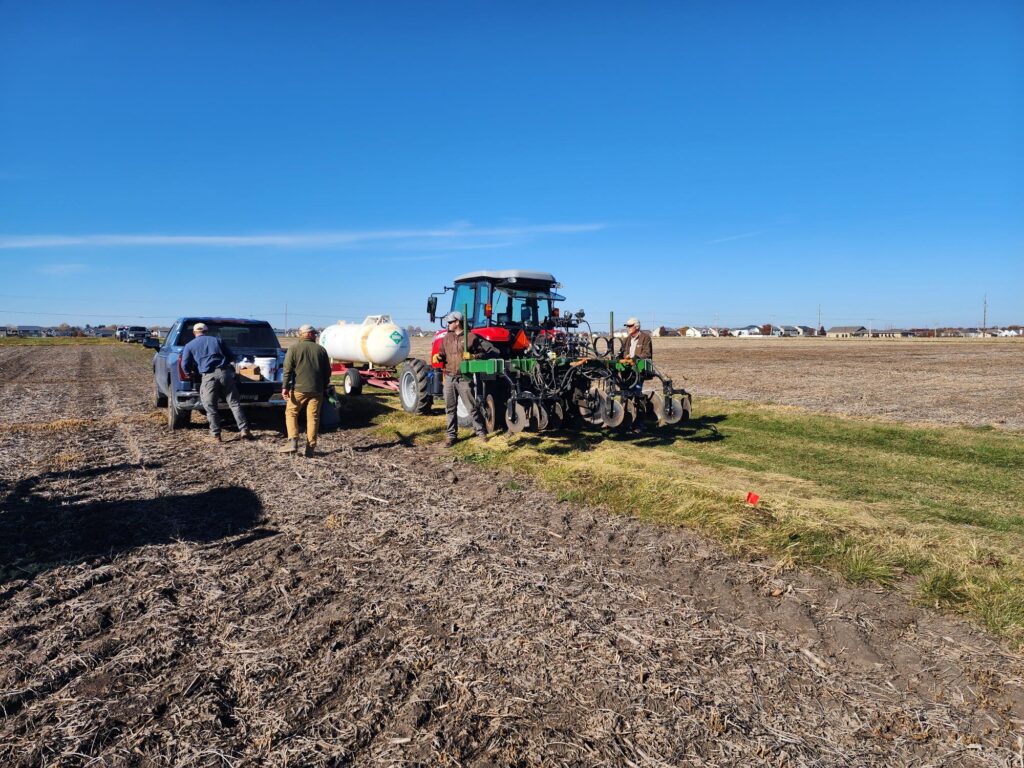Controlled Release Nitrogen Fertilizer Study

Springtime is a narrow window of time to complete field tasks like fertilization, tillage, planting, and herbicide application. Some farmers apply their fertilizer in fall instead, to lessen the chaos in springtime. However, fall application of fertilizer has been correlated with higher nitrogen losses from the field, meaning the farmer lost money on escaping nitrogen, and that escaped nitrogen is negatively impacting the environment. A new solution is needed. With funding from the Illinois Nutrient Research & Education Council (NREC), we are testing the performance and environmental impact of fall-applied controlled-release Nitrogen fertilizer (fall CRNF). This fertilizer has coating technology that delays fertilizer release until springtime moisture and temperature activates the release. Additionally, CRNF is designed to release at a controlled rate following a sigmoid shape. This sigmoid shape better matches the uptake rates of crops through the growing season. In theory, the delayed and controlled release rate of CRNF will better fertilize crops and reduce Nitrogen losses into the environment.
Our project is specifically observing how CRNF impacts corn’s nitrogen use efficiency, soil water quality, GHG emissions, and grain yield. We are comparing the impact of CRNF to conventional anhydrous ammonium, which is conventionally applied in the fall in Illinois. Throughout the growing season, we are measuring nitrous oxide and carbon dioxide gas emissions in real-time using the Gasmet technology. We are also utilizing MacroRhizons to collect soil water samples to measure the leaching of nitrate and ammonium. Soil sampling and hand-held NIRS are also being employed, to capture the movement of nitrogen by plant uptake. Agronomic metrics like plant height, germination rate, and grain yield are being monitored to compare the economic returns on CRNF versus anhydrous ammonium. If CRNF proves to have lower nitrogen losses while maintaining or increasing yields in comparison to anhydrous ammonium, then this new category of fertilizers will be a valuable tool for farmers in northern regions where fall-application of fertilizers is nearly necessity.
CRNF Project Members

Daniel Wasonga
Postdoctoral Research Associate

Kayla Vittore
Graduate Student (PhD)